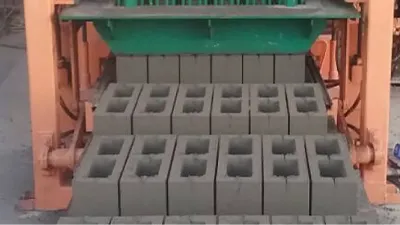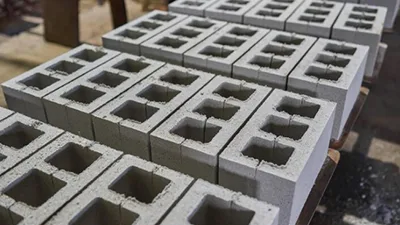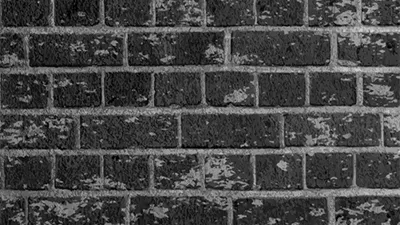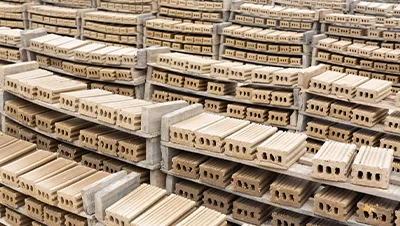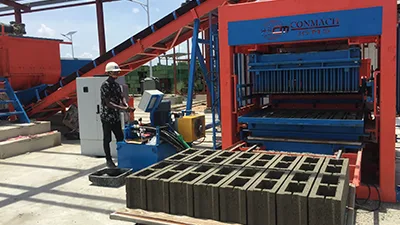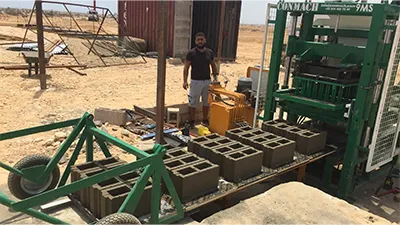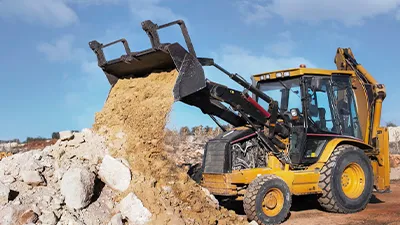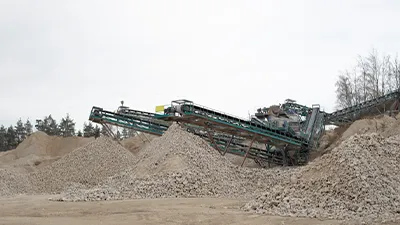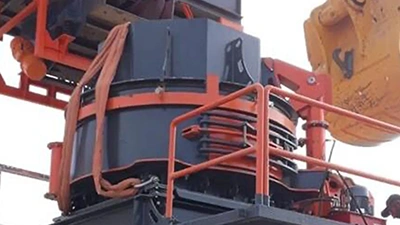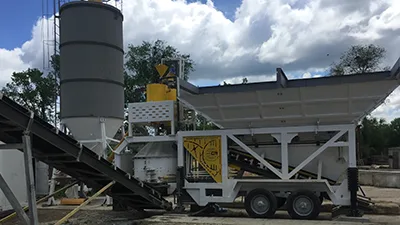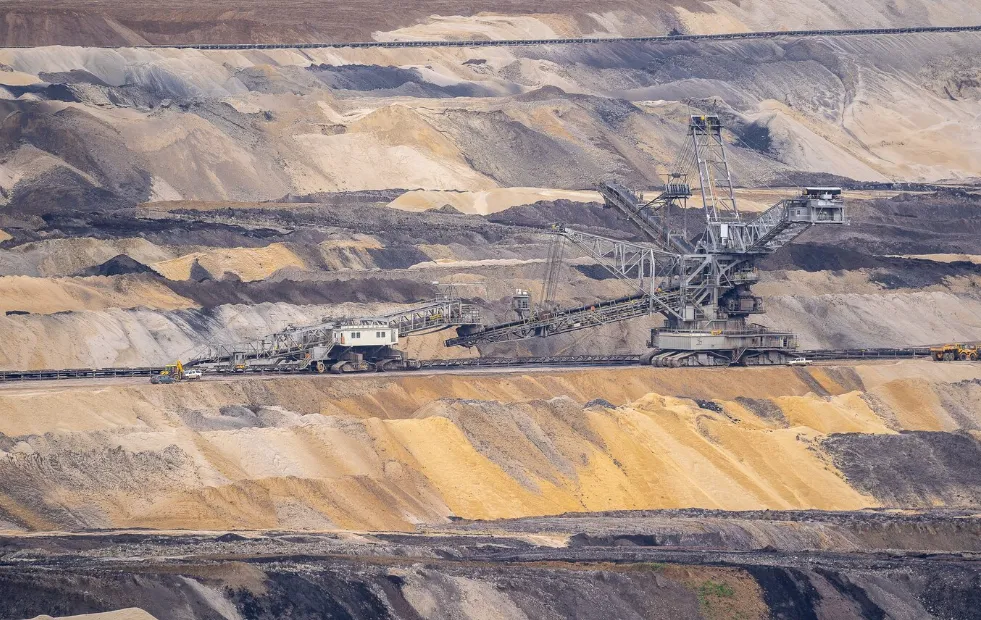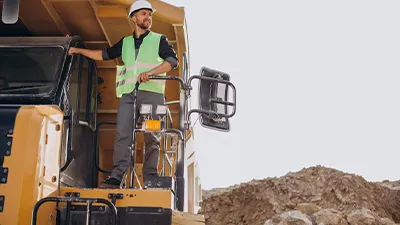A concrete plant is an industrial facility that provides concrete production. The fast and high-quality production of concrete, a raw material for the construction sector, is made possible by these facilities. Concrete plants are produced as either fixed or mobile according to the needs of the project they will be used for.
A concrete plant provides high-capacity production by homogeneously mixing water, cement, and aggregate. These plants are critically important for large-scale projects such as infrastructure, buildings, bridges, and road constructions. The large quantities of concrete required can be met in a short time thanks to these plants.
The stages of concrete production are as follows:
- The water, cement, and aggregate used in concrete production are stored to meet immediate needs.
- This mixture is weighed in the correct proportions and placed in the plant’s hopper.
- For high-quality concrete production, raw materials are homogeneously mixed and made ready for use.
Setting Up a Ready-Mix Concrete Plant
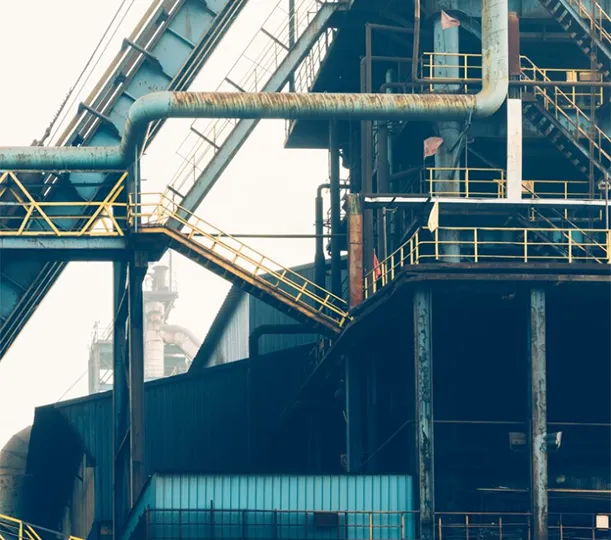
Setting up a ready-mix concrete plant is a process that requires serious investment and careful planning. However, this investment can significantly contribute to the production process in the long term. Before establishing a concrete plant, a detailed feasibility study should be conducted, and the needs of the sector should be determined. Based on this need, a decision should be made on whether to establish a fixed or mobile plant.
The location of the plant should be strategically correct. This way, transportation processes can be carried out more quickly. In addition, necessary legal permissions related to occupational health and safety, construction regulations, and environmental regulations should be obtained.
The installation of the concrete plant should be completed with the support of engineers and technicians from the manufacturing company. The plant should be operated by qualified personnel. Maintenance and checks of the facility should be carried out at regular intervals.
What Are the Advantages of Concrete Plants?
Concrete production facilities offer many advantages for the construction sector. These plants allow for the production of large quantities of concrete quickly and with high quality, saving time and labor. Bulk concrete production reduces material waste, thus lowering costs in the long term. Modern concrete plants enable less waste and environmentally friendly production.
With ready-mix concrete plants, production of different types of concrete can be achieved using different mixtures. These plants provide sustainable production with their versatile production capacity. Plants equipped with advanced technology reduce energy consumption. Especially mobile concrete plants can meet the needs of multiple projects due to their ease of transportation.
Setting Up a Concrete Plant
Concrete plants are facilities that provide supply for large-scale construction projects. These plants supply ready-mix concrete to meet project needs and help ensure the timely completion of construction projects.
Setting up a concrete plant requires careful consideration of several key factors, the most important of which is the location of the facility. The plant should be located near large projects to reduce costs, such as transportation, and to save time.
The essential features that such plants should have to ensure the production of quality concrete are as follows:
- Site selection
- Legal permits and environmental regulations
- Correct equipment selection
- Energy and water consumption
- Workforce and training
- Logistics and distribution organization
- Quality control systems
- Maintenance and repair plan
- Environmentally friendly technologies
- Financial planning
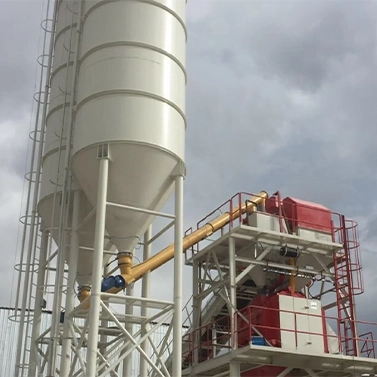
These criteria are considered indispensable for setting up a concrete plant. It is crucial to pay attention to these factors to maintain the dynamics of the construction sector.
Taking the right steps based on these essential factors during the installation process ensures the plant’s long-term success.
Setting Up a Ready-Mix Concrete Plant
A ready-mix concrete plant has the capacity to produce concrete according to demand and specific customer needs. These facilities also offer the service of delivering the prepared concrete to construction sites.
The advantages of ready-mix concrete production include standardization in concrete quality and quickly meeting the concrete demand, saving time for projects.
It is also important that these plants are located near construction sites, as delivering the concrete to the construction site as soon as possible is essential for maintaining its quality.
When setting up these plants, attention should be paid to the following points:
Additionally, the size of the plant should be planned appropriately according to its production capacity.
Ready-mix concrete plants make significant contributions to the construction sector, particularly in large cities and regions with a high concentration of construction projects. The growth of the construction industry increases interest in these plants.
Cost of a Concrete Plant
The cost of setting up a concrete plant varies depending on several factors. Many variables affect the cost, including the plant’s capacity, the equipment used, and technological advancements.
Plant capacity is the most significant factor affecting cost. A small-scale plant is less expensive, while the cost of a large-scale plant is significantly higher.
Some of the equipment that constitutes a major portion of the costs are:
- Concrete mixing machines
- Silos
- Conveyor belts
- Mixers
In addition to these, procuring modern equipment that ensures energy efficiency may be costly at first, but it provides substantial savings in operational expenses in the long run. Other factors influencing costs include preparing the infrastructure where the plant will be established, such as laying energy and water lines, which adds extra expenses.
High-capacity plants have higher costs. These aspects should be considered during the installation of the plant. Another point to consider is compliance with environmental regulations and the establishment of waste management systems.
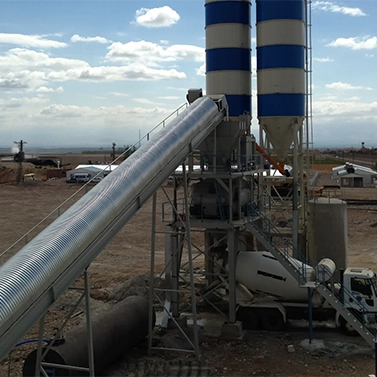
Cost of Setting Up a Concrete Plant
The cost of setting up a concrete plant includes all the investment expenditures during the installation process. These expenses cover plant construction, equipment procurement, installation, and the testing phase. While the initial cost of setting up a plant is generally fixed, it can vary depending on the plant’s capacity and technical equipment.
The costs associated with the installation process continue even after the plant is established. Post-installation expenses include:
- Daily operations of the plant
- Employee salaries
- Energy expenses
- Maintenance and repair costs
Besides these criteria, using automation systems can help reduce labor needs and energy consumption, thus lowering operating costs. This is particularly relevant for modern concrete plants built with advanced technologies.

